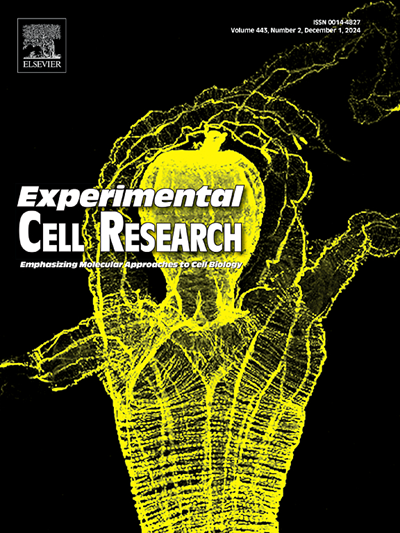A semi-permeable insert culture model for the distal part of the nephron with human and mouse tubuloid epithelial cells
IF 3.3
3区 生物学
Q3 CELL BIOLOGY
引用次数: 0
Abstract
Tubuloids are advanced in vitro models obtained from adult human or mouse kidney cells with great potential for modelling kidney function in health and disease. Here, we developed a polarized human and mouse tubuloid epithelium on cell culture inserts, namely Transwell™ filters, as a model of the distal nephron with an accessible apical and basolateral side that allow for characterization of epithelial properties such as leak-tightness and epithelial resistance. Tubuloids formed a leak-tight and confluent epithelium on Transwells™ and the human tubuloids were differentiated towards the distal part of the nephron. Differentiation induced a significant upregulation of mRNA and protein expression of crucial segment transporters/channels NKCC2 (thick ascending limb of the loop of Henle), NCC (distal convoluted tubule), AQP2 (connecting tubule and collecting duct) and Na+/K+-ATPase (all segments) in a polarized fashion. In conclusion, this study illustrates the potential of human and mouse tubuloid epithelium on Transwells™ for studies of tubuloid epithelium formation and tubuloid differentiation towards the distal nephron. This approach holds great promise for assisting future research towards kidney (patho)physiology and transport function.
使用人类和小鼠肾小管上皮细胞的肾小管远端半渗透插入培养模型。
肾小管是一种先进的体外模型,由成年人类或小鼠肾脏细胞获得,在模拟健康和疾病肾脏功能方面具有巨大潜力。在这里,我们在细胞培养插片(即 Transwell™ 过滤器)上开发了极化的人和小鼠肾小管上皮细胞,作为远端肾小球的模型,其顶端和基底侧均可触及,可用于表征上皮特性,如漏密性和上皮阻力。肾小管在 Transwells™ 上形成了一个密闭和汇合的上皮细胞,人类肾小管向肾小管远端分化。分化诱导关键节段转运体/通道 NKCC2(亨利环粗升支)、NCC(远曲小管)、AQP2(连接小管和集合管)和 Na+/K+-ATP 酶(所有节段)的 mRNA 和蛋白表达以极化方式显著上调。总之,这项研究说明了 Transwells™ 上的人和小鼠肾小管上皮在研究肾小管上皮形成和肾小管向远端肾小管分化方面的潜力。这种方法在协助未来的肾脏(病理)生理学和运输功能研究方面大有可为。
本文章由计算机程序翻译,如有差异,请以英文原文为准。
求助全文
约1分钟内获得全文
求助全文
来源期刊

Experimental cell research
医学-细胞生物学
CiteScore
7.20
自引率
0.00%
发文量
295
审稿时长
30 days
期刊介绍:
Our scope includes but is not limited to areas such as: Chromosome biology; Chromatin and epigenetics; DNA repair; Gene regulation; Nuclear import-export; RNA processing; Non-coding RNAs; Organelle biology; The cytoskeleton; Intracellular trafficking; Cell-cell and cell-matrix interactions; Cell motility and migration; Cell proliferation; Cellular differentiation; Signal transduction; Programmed cell death.
 求助内容:
求助内容: 应助结果提醒方式:
应助结果提醒方式:


